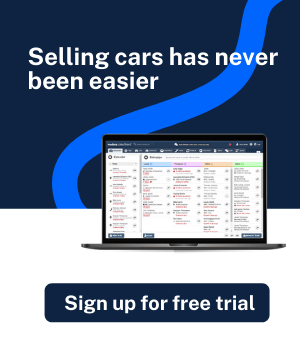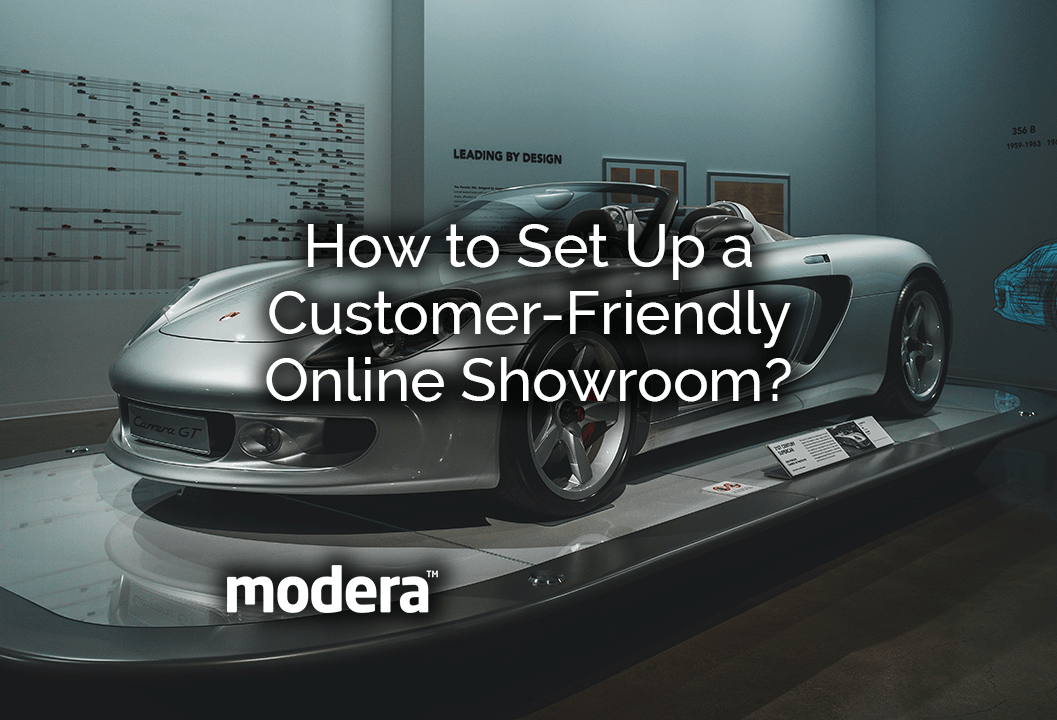
The past couple of years have changed the way we operate businesses forever. The Covid-19 pandemic has forced auto retailers and dealers to think about digitizing their operations on a larger scale. It is clear how essential it is to establish a solid process to sell cars online. It is all about digital first-normal these days. Simply tweaking your automotive website won’t work – you have to truly adapt your business to maximize revenue and scale efficiently. That is why you need a customer-friendly online showroom and automotive ecommerce site to boost ROI, even in such tough times.
What is user-friendliness?
People miss the experience of visiting a dealership, so you need to offer something that makes them feel the same way. A user-friendly online showroom should be easy to understand and navigate. Even if you want it to be fancy, the layout needs to such that it is appealing to customers from the get-go. Don’t confuse customers with the features and functionalities offered. From visuals to the functionalities that you like to add to your showroom, be cautious about the selection and implementation strategies. The ultimate goal is to offer a seamless experience to users and end-customers.
How to set up a customer-friendly online showroom or automotive ecommerce site?
1. Enable searchability
Users don’t have time to flick through endless content and long descriptions. They want to get precise results for search queries. For instance, if they search for “Toyota 2021” models, they want to get exact results. If you don’t enable a proper product search option in your online showroom / automotive ecommerce site (different names in different areas of the world), you lose a significant number of customers. By enabling searchability, you make it convenient for visitors to look for the vehicles of their choice. This ensures conversion from the online dealership.
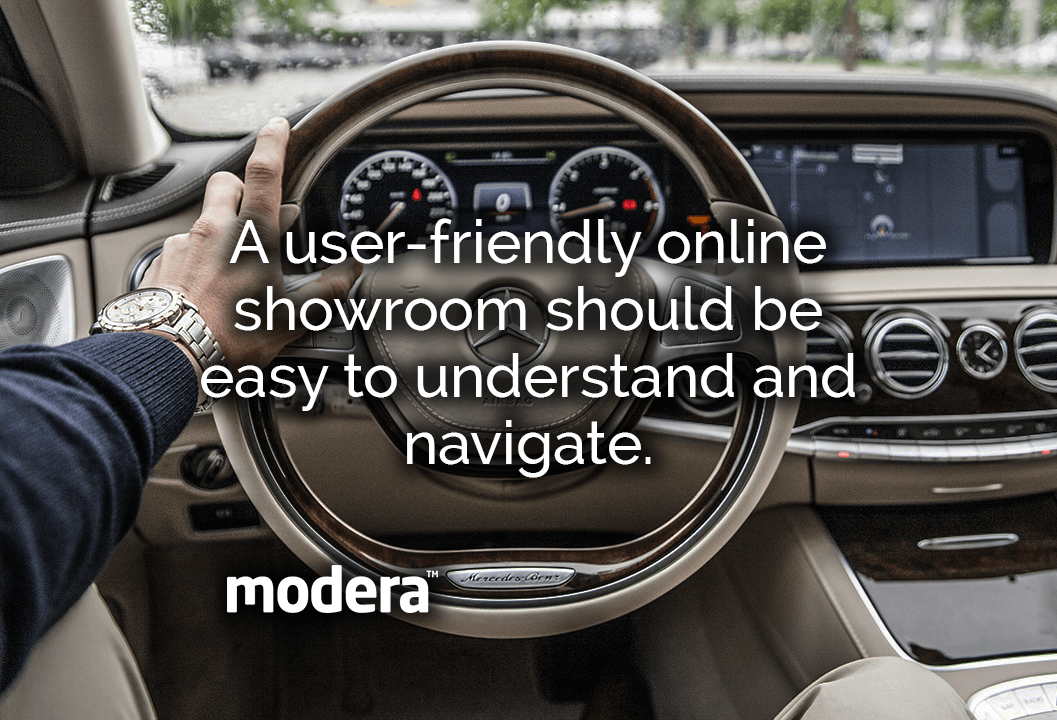
2. Easy navigation
As mentioned above, trouble-free navigation matters a lot. Your virtual dealership will have categories, sub-categories, and internal variations to list the vehicles. For quick organization of the vehicles, dealerships have to seek for a pattern of product division. It can be difficult for customers to find something among the loads of inventory. The addition of a “breadcrumb” on each of your product pages can be helpful for your customers to navigate through to the right product.
This feature helps customers memorize which category their products belong to. These breadcrumbs are mostly given above or below the title tag of that page. But then again, it isn’t compulsory to use a similar pattern. The design layout and placement of navigation tabs can be updated when you perform A/B testing. This analysis helps to drive better results.
3. Optimize speed
No one wants to explore an online showroom that takes ages to load. If customers notice even a few seconds of delay, they will leave instantly and shop around from your competitor’s automotive ecommerce site instead. Did you know the average load time of an online showroom should be less than two seconds? If it isn’t able to meet these requirements, you lose a massive chunk of visitors before they become customers. Various speed tracking tools are available to check the speed of your showroom. Once you find out the reasons behind the delay, you can optimize the loading speed. When it comes to optimization of your online store’s content, the image optimization and file size optimization can be the initial ideas to count on.
4. Update your call-to-action (CTA)
What happens when your customers want to buy a car but there are no buttons, tabs or directions to help start the purchase process? Customers get angry and leave! An online showroom is incomplete without CTA buttons. They help you guide customers to the final section of the website where conversion can take place.
Keep in mind that conversion isn’t always related to monetary benefits, but they are more like end-goals. CTAs are meant to take your traffic to those web pages that can lead to the attainment of the end goal. But for an online dealership, it is mostly about hitting monetary targets. CTA buttons should be placed in such a way that boosts rate of conversion. You can include banners and enable scroll to add multiple CTAs and news there. If you add a redirect link to the CTA button, don’t forget to mention if the following page has to be opened in the fresh tab or in a similar tab. If a customer has to refer to an existing page, there should be an option to open the webpage in the next tab.
5. Clear the path to begin the purchase process
If customers don’t see a clear path to start their journey and purchase process, then the entire effort of setting up the new online showroom goes for a toss. Shoppers will eventually give up and go elsewhere.
While CTA buttons are important, it is necessary not to have too many of them, or you risk customers getting lost in the maze. Not all buttons have the same value for you or the customer, so funnel your traffic to the buttons that drive the best outcomes. A convenient way to do this is by identifying buttons that are redundant or create dead-ends for the users. It includes links off-site and lead forms that ask for information but provide no immediate answers in return.
For instance, if a shopper has filled out an “Unlock Extra Savings” form to check how it has affected the overall price, they won’t be as valuable as the shopper who clicked on “Explore Payment Options”. The latter has followed it up by instantly personalizing their payment, valuing their trade, saving an account on your online forum, and starting to add accessories and insurance products. Clearly, the second shopper is more beneficial, so it is imperative to guide more visitors along the same path.
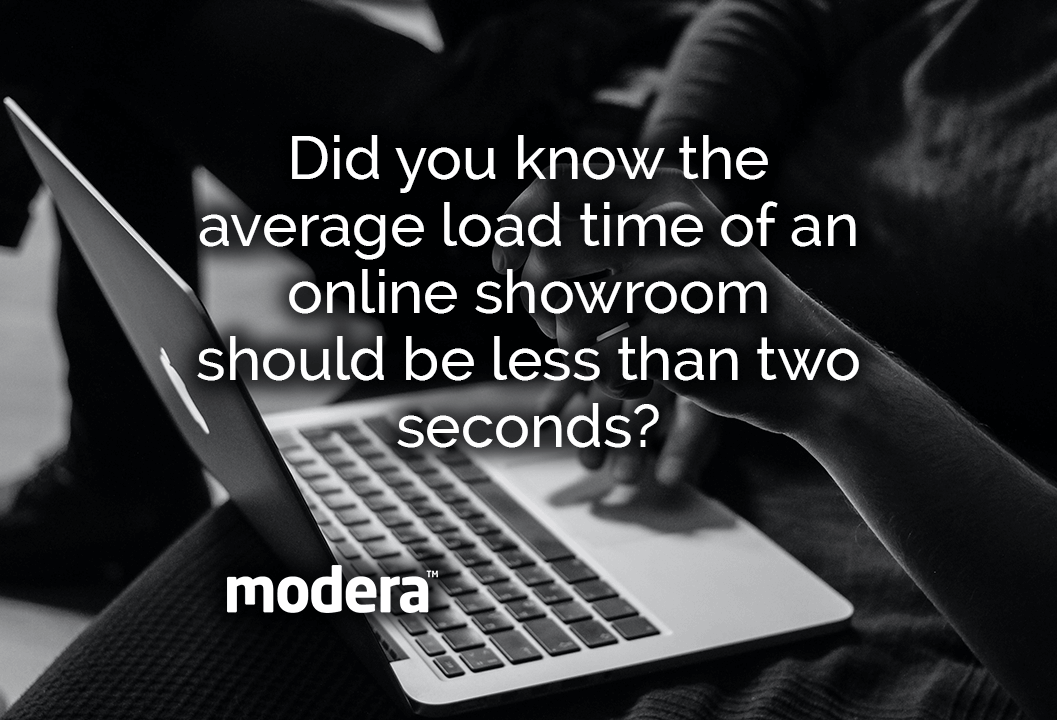
It might seem tempting to add more paths to generate more leads. In fact, removing buttons, could feel counter-productive – it seems like you are eradicating opportunities, but the opposite is true. It is about offering the best and most flawless shopping experience and then focusing the traffic on it. Dealers who follow this strategy are mostly likely to see increases in volume and quality of their leads.
6. Every lead is a walk-in
Remember this online showroom is the new normal – it is your primary storefront. Now that business has been drastically affected by the pandemic, it is important to remember that mere leads aren’t enough. For dealers to operate with lower labor and advertising costs, it is necessary to fundamentally shift their thinking around leads as an industry. You have to take the same level of service customers expect in-store, to your online showroom.
So imagine if a customer walks into your physical store with an interest to explore the inventory and talk about financing options. You give them a clipboard with a form, ask them to fill it out, and politely say someone will be in touch to answer their questions. The shopper would likely get dissatisfied and leave, but perhaps numerous leads (who could become shoppers) have the same experience in your online showroom each day.
Pair your digital retailing tool with an advanced messaging platform that can help you out with customer service like instant answers, helpful materials (vehicle details, brochures, videos) etc. Even live video chat is useful to talk face-to-face and show the customer around the vehicle.
Just like you would show a customer around the store, offer a virtual walk-around, and talk through specific financing options. These digital tools help out in the same way that actual personnel would during business hours. Even if you don’t catch the online shopper in the moment, you should still treat them like a walk-in. However, it doesn’t mean using the old lead form follow-up approach.
These shoppers have looked at, saved, customized specific vehicles, and explored payment options, so the follow-up should acknowledge that effort. The progress has to be recorded, so your team can quickly pick-up where they left off. It should be as if they had an appointment yesterday and now they are back in the showroom. Automated emails and uninformed phone calls are a strict no-no. They cause a complete disconnect in customer experience – it makes them feel they have to start over, so you have to treat them like walk-ins you are familiar with.
7. Allow social sharing
People love to buy from those they trust. If referrals come from their friends, family, relatives and social circle, they are more inclined to follow up. Enable social sharing buttons in your online store. Customers should be able to refer it to their near and dear ones, talk about their experience, share preferred vehicles options, and much more.
This feature is definitely beneficial for customers, but on the other hand, it is helpful from a business perspective as well. The more people get to know about the type of vehicles in your inventory, the better the chances of conversion. Integrate social channels with your customer-friendly online showroom. Customers can look you up across available platforms and trust your identity as a business. Further, you can market across your social handles and increase the chances of your reach in the market.
8. Showcase best sellers
While vehicle preferences differ from person to person, there is no harm in displaying which cars are currently in demand. Remember, simply updating the product catalog won’t be sufficient for conversion. Highlighting bestsellers at the store is what you should be aiming for. With the help of “Best Sellers”, “New Arrivals”, and “Featured Vehicles”, you can highlight the fast-moving and popular products in the catalog. It helps cross-sell and upsell products, accessories, insurance options, etc. in the inventory.
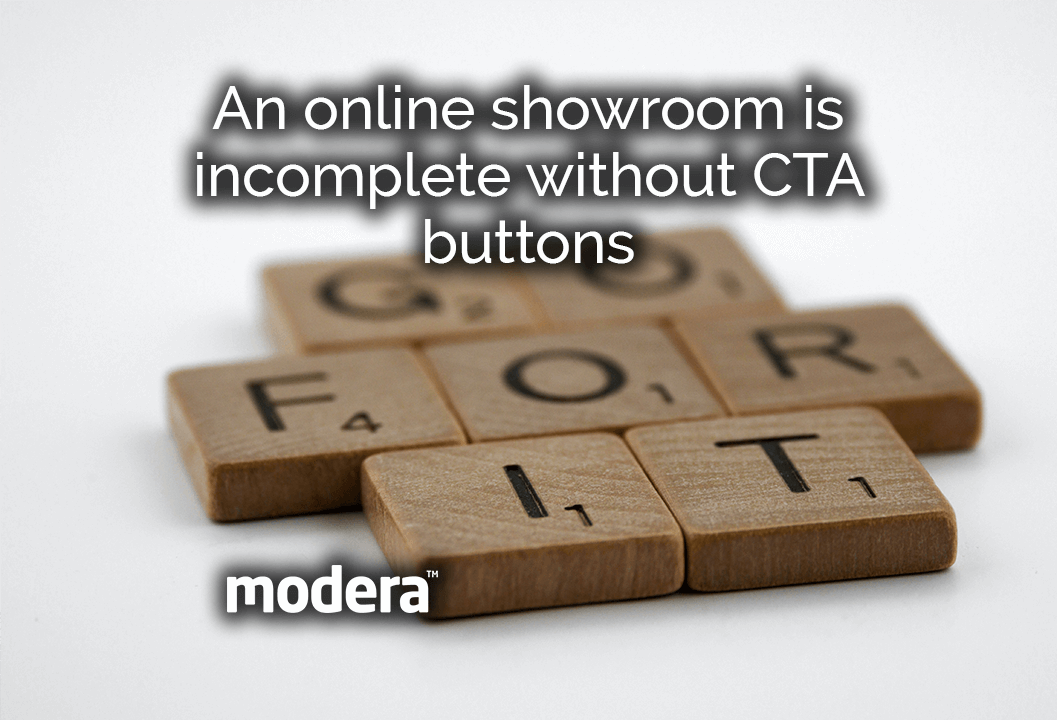
9. Ensure the contact page is updated
When customers shop directly from an online showroom, they are putting their faith into vehicles and associated services without actually checking them. It is imperative they are able to reach you immediately if they have questions. If your contact page isn’t updated, there is a high chance of customers leaving and never visiting again.
Keep the details simple and subtle. It is highly recommended to integrate Google maps so customers can locate you easily. This feature is necessary, in case they want to visit your brick-and-mortar establishment. For personalized customer inquiries, keep a distinct form that pops up when required. Add the link or pop-up to that form on the contact page as well. It is recommended to add an email address, phone number, alternative contact number, and the physical location of your store.
10. Upgrade customer service
The customer should be happy with the service they receive, so the customer service team has to be easily reachable. One way to ensure that is to enable live chat support on your online stores. It acts as a guide for your converting customers, and takes them to the proper checkout process. Enable mail and/or telephonic support to handle customer issues and concerns. The post-deployment services for the vehicles sold from your store are as crucial as the pre-order services. Providing good customer services ensures you can engage with them better and build a solid connection.
What happens when customers want to visit in person after checking out your online showroom / automotive ecommerce site?
Now that you have set up the perfect car buying experience, you have to ensure it doesn’t fall short when a customer walks into your brick-and-mortar establishment. Just like follow-ups, you have to ensure your dealership and team greets these customers as previous walk-ins who have already worked with you.
From the technology aspect, set up devices with welcome screens, or put up print signage, which immediately validates to your walk-ins that the progress they made online lets them “jump the line”. Rather than feeling they have to re-introduce themselves and start over, they can go right ahead to buying the vehicle of their choice. This is the kind of experience customers enjoy, while helping to build your review reputation and increase close rate too.
Your sales team should be familiar with the workings of the digital showroom. If a customer walks in and says they have struck the perfect deal based on their credit, trade, and preferences via your online showroom, the team has to be on top of this. If they don’t know the first thing about how someone can start their car buying process in the digital storefront, it could get really awkward and the customer might walk off in a huff. The team should be able to pull up the customer profile with their progress and begin without any delay.
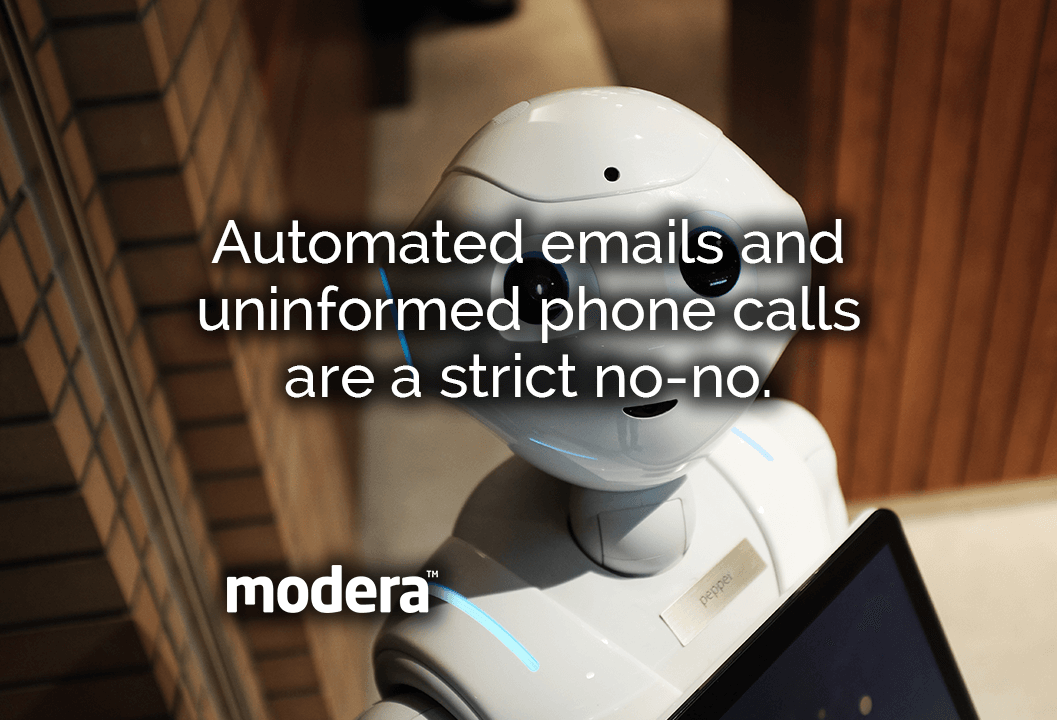
1) Time to double up on your marketing efforts
Now that you have set up an customer-friendly online showroom, you have to ramp up marketing efforts. You need to incorporate the aspect of online car buying throughout the automotive ecommerce website, and tweak your marketing message. Thus, you can expect to boost high-intent traffic that you are driving to your platform.
2) Landing Page
Capture the attention of customers from the get-go. Add an attractive landing page to show visitors that your dealership offers online car buying, how they can get started, and why it makes their shopping experience better.
3) Change the Creative
Starting from homepage sliders and personalizers to VRP banners, ensure that your visitors know from the moment they hit your digital showroom that they can go the distance online. It makes all the difference between a bounce and buyer.
4) Search Advertising
Digital retailing works as both a strong USP and fresh CTA, so if you are running PPC campaigns as part of your search advertising strategy, it is time to give it a boost. Update your ad copy to highlight your online experience. The “Purchase Now” or “Buy Online” button should be a sitelink extension, while other campaign related keywords need to be included.
5) Video Advertising
People are stuck at home and streaming more videos than ever! Why not use this trend to create the ideal car buying experience for customers from the privacy of their homes? Use Facebook, Instagram, YouTube, and OTT advertising to drive more shoppers to your online showroom.
6) Don’t forget about growing your online reputation
It is imperative to update your marketing messaging for online car buying, but here is where it gets complicated. The message is no longer quite as unique as it was some months ago. Every competitor is offering online car purchases, because they have to, given the need of the hour. So you might offer seamless car purchasing, plethora of finance options, and other features. But your claims have to be backed up with the experience and most vital proof point – happy customers.
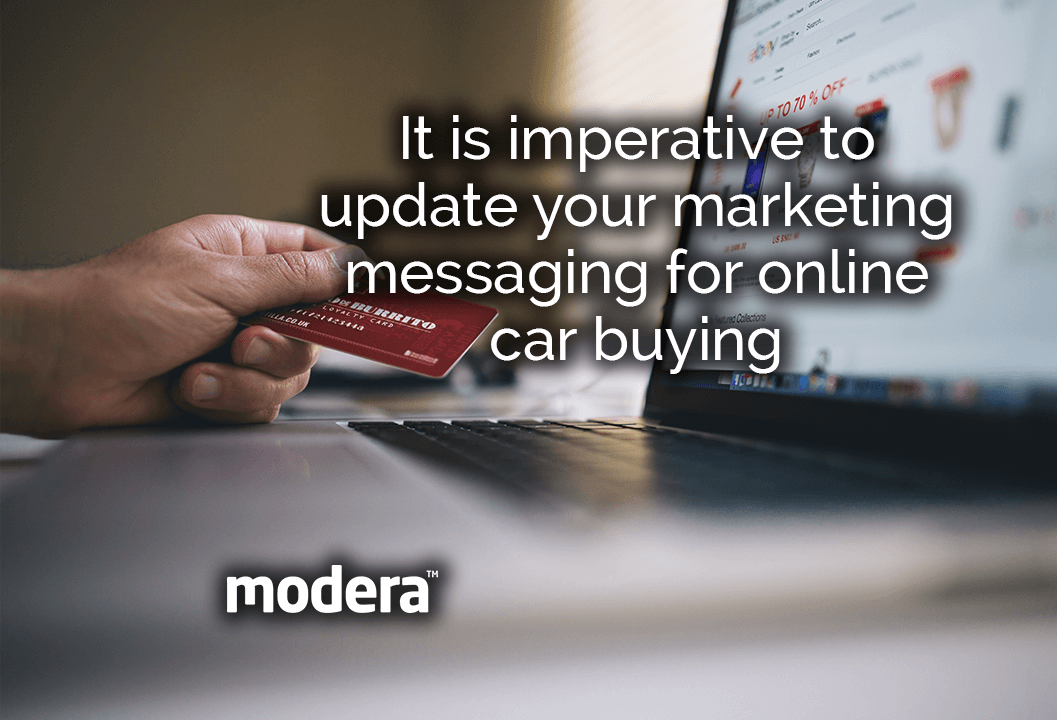
Reviews that mention online car purchases and home delivery along with general convenience and speed are going to make all the difference. Ask your customers to leave positive feedback of their amazing experience across platforms, to grow your most powerful differentiator in the market – your reputation.
Let your online showroom represent your brand and business – design it in such a way that it speaks about the amazing experience you offer. The message should be loud and clear – this is the place to be if they want to buy their next vehicle. Make the digital store easy to navigate and user-friendly, so people keep coming back and eventually start their customer journey.
If you really want to give your customers the best online car buying and customer serving experience take a look at Modera Webfront for your dealership website, Modera E-Commerce for you online automotive store and Modera Salesfront for your dealership CRM.
